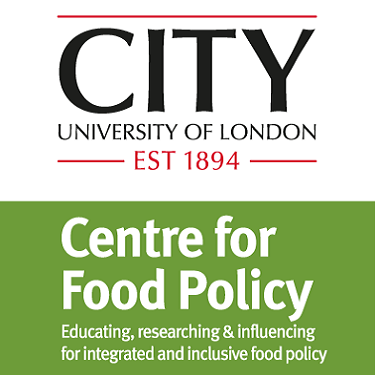We are delighted share a blog this month from Tim Lang, Professor of Food Policy at the Centre for Food Policy and Trustee of Borough Market, London:
Since my time as a farmer, I have always viewed the world of food through both practical and academic lenses. Doing and thinking. One of the joys of working for the Centre for Food Policy is that we have tried to carve out academic space to view food through both lenses. It is hard work but our teaching and research are immeasurably enriched by our tradition of external and practical engagement with the real world of policy-making.
When the Centre started, this was very unfashionable. The UK Research Assessment Exercise (now the Research Excellence Framework – REF) rewarded intellectual activity only. Outside engagement was fine if it meant working with business or taking commercial contracts, but we set out to work with civil society, and non-profit sectors – precisely those who don’t have big coffers.
For the last 10 years, I have been a Trustee of Borough Market, here in London. This wasn’t for REF impact but simply because it set out to champion high standards and to celebrate real food, to be a beacon for this in London and Britain. And because I like markets.
A few weeks ago, Borough Market was news worldwide for the terrorist outrages. We will remember this for a long time. But this is one of the oldest continual markets in the world. It has seen and will see a lot. Our records suggest Borough Market is 1,000 years old. It settled in its present location by Southwark Cathedral in the mid 18th Century having been spread down the road before and, at one point, being on London Bridge itself. It’s the only market we know to be enshrined by an Act of Parliament in 1754. It’s non-profit; neither privately nor local state owned. This is food for the people. My duties as Trustees are to keep it as a market for the people for ever. Not a bad brief.
In the 1970s I had watched the slow decline of British markets, as supermarket power got a grip on the UK food system. Retailers even colonised the word, adding super to market. Everywhere, markets got tatty, lost customers, were edged out of innovation, and were ignored by city and town councils. To be on the market committee of a local authority was a sign you were a good person not exactly hot politics. Borough Market, as an independent body, had stopped selling direct to shoppers and become a wholesale market. Even that was squeezed by retail power. In the 1980s at the London Food Commission, advising the Greater London Council, we had tried to get the British consumer movement interested in revitalising markets but had failed.
So in the 1990s I watched with pleasure when a new experiment opened up at Borough, when a few artisanal producers held a new consumer-facing occasional market. It took off, and Borough quickly – with a lot of hard work – was transformed into the current format and beacon status. Food scouts quickly came to see what was occurring, to revamp the boredom of supermarkets. It helped that the Market was in a run-down part of London, south of the river, but subject to a huge regeneration, with the Tate Gallery taking over the decayed power station. Borough Market became a hub for this new fun and realism.
So when I was asked to become a Trustee in the mid 2000s, I paused (thinking of workload) but said yes. It has been one of the most rich and varied experiences of my life. We Trustees are the overall managers but our remit is to keep it going. In fact, it means nurturing the conditions and infrastructure for over 150 businesses who, in turn, employ over 1,000 people. It’s been an incubator, a trial, a cultural renaissance, and at times a crisis. We have our own direct staff who run everything. We create space for others to see, to try and to buy foods. This is Markets as social and economic infrastructure. Taste and pleasure for all.
Then, early on Sunday June 4, I was woken at 01:00 hours by a Market alert, an exchange between our CEO and Chair. Three men in a van had just mowed down people on London Bridge just above Borough Market and then run rampage through our lovely Market a few hours before. Property, businesses and above all people were damaged. Knives had been strapped to hands to kill and maim, rather than be used to cut food for human pleasure. Bodies and injuries were everywhere. I was horrified. We couldn’t do anything. Our lovely Market was under siege. Police and marksmen had taken over our space to reassert order. I saw a rapid, understandable spiral, a civil food space had become uncivil space. I was (and remain) outraged. Events had taken over.
Due to our huge success, the Market was always a risk, and we were and are security conscious. We get over 100,000 visitors a week. June 3 was a cultural attack on a modern, liberal, democratic space. We don’t have barriers at the market. It is space we work hard to keep quirky, with few straight lines, things always to catch the eye, the senses. It’s a place which celebrates diversity of foods, cuisines, cultures, people, lives, livelihoods and collective humanity. Food as social glue.
We’d rehearsed our security measures only the week earlier to the terror. But that could not prevent what happened. The responses of tenants, local people, customers and the wider London public has been typically robust and humane. Our staff worked round the clock. It was magnificent but the economic damage to our tenants is terrible, and continues. (Welcome to the world of insurance.) The market is a place for small businesses, who are shaken by what has happened, not allowed onto the scene for 10 days as forensic teams combed it. The losses mounted. We set up a hardship fund. We rolled up sleeves. We refused to get into blame games. But all this was because the Market was a space people love. It’s as popular in the evening, just off the River, and for its pubs and restaurants which are transformed by the ‘new’ market.
This is an object lesson in how food is about culture and physical space, among all the other features it teaches us.
We who work in food policy know only too well how food can be violent. Hunger and famines are violent. The terrible damage that over- and mal-consumption does to societies and families is a form of violence, I suppose. Food work can be enriching, but it also can wreck lives. History teaches us that food can also be a weapon of war. That is why we remind people of how the European project made food security so central. Messy though it has been, Europe has been a civilising force for us Brits. Food can also be an emotional weapon inside families and inside individuals. (I got into food via my PhD on phobias.)
We had all dreaded an outrage at the Market, but its ferocity on June 3 took our breath away. We have tried to reassert how food can and must be a healer, too. It can be peace offerings, just times, sharing, cultural exchange, love, exploration, affection, even ambivalence. All these features are to be treasured. It’s where we are.



Leave a Reply